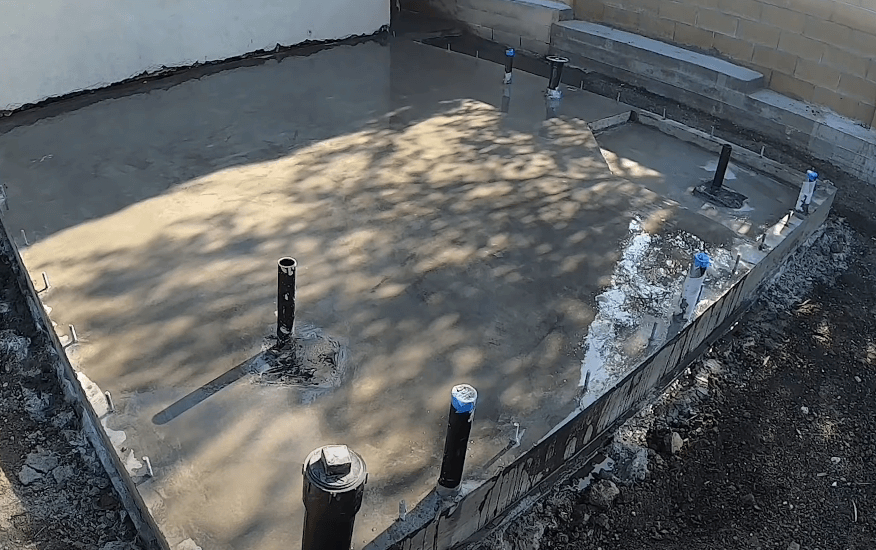The concrete slab installation includes setting up the formwork, placing the reinforcement, pouring, compacting, and completing the concrete, and then taking down the formwork and curing the concrete slab.
Build and Install Formwork for Slab
The formwork must be built to handle construction loads like the weight of the workers and their equipment as well as the pressure of freshly laid concrete. When erecting formworks, a variety of construction-related factors need to be taken into account. For instance, it needs to be properly positioned, lined, and leveled; joints need to be adequately sealed; and protruding nails into the concrete should be avoided, etc. Additionally, a variety of materials, including aluminum, steel, and wood, can be utilized to create the formwork for a concrete floor slab.
Prepare and Install The Slab’s Reinforcements.
Examine and examine forms to ensure that the dimensions and placement of the concrete members comply with the structural designs before placing reinforcement for the building of concrete floor slabs. Additionally, the forms must be carefully cleaned and oiled, but not so much that the oil runs into the bars or the joints where the concrete is being constructed. Design drawings provide all necessary reinforcing information, so all that is needed to use the authorized bar size, cut the requisite length, and create the relevant hooks and bends is comprehension. Steel bars are positioned into their placements with the aid of predetermined spacings and concrete covers after preparation is complete. By adding spacers and bar supporters, the concrete cover and floor slab spacing can be preserved. To tie primary reinforcement, shrinkage reinforcement, and temperature reinforcement, utilize wires (distribution reinforcement).
Concrete Floor Slab Construction: Pour, Compact, and Finish
Concrete mixing, moving, and handling must be appropriately coordinated with installation and finishing tasks. Start placing concrete in the floor slab along the perimeter at one end of the project, setting each batch against previously poured concrete.
To avoid segregation, concrete should be placed at or as near to its final position as practicable. Therefore, it is forbidden to place concrete in big, distinct piles before shifting them into their ultimate location horizontally. Additionally, the site engineer must correctly supervise the concreting process and watch for any potential issues. For instance, the disappearance of grout is a sign of poor joint sealing and movement. Additionally, cracking, excessive deflection, level and plumb, as well as any movement, must be examined and addressed to stop further issues.
Concrete Curing and Formwork Removal
After finished, the concrete must be properly cured using the right technique. Methods for curing slabs include water cure, flooding, ponding, and misting. The use of coverings like sand, canvas, burlap, or straw to keep the surface of a slab moist continually is a form of water retention. Other methods include chemical membranes and waterproof paper or plastic film seal. It is advised to remove formworks after 14 days of cure.
